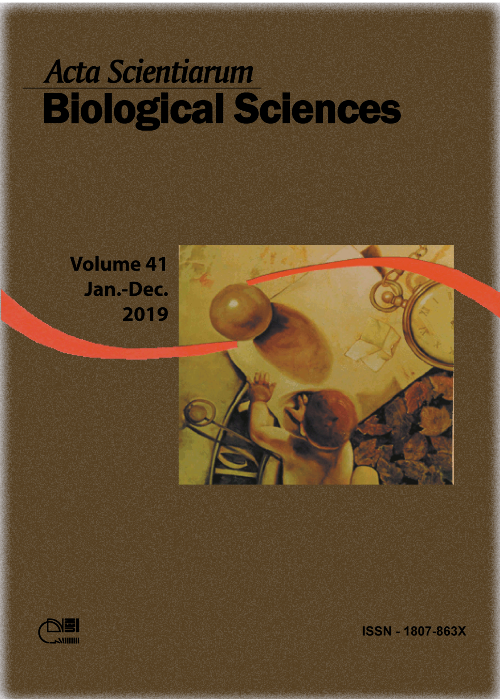Biosurfactant production by <i>Phialemonium</i> sp. using agroindustrial wastes: influence of culture conditions
Abstract
Biosurfactant are surface active compounds with emulsifying capacity and are produced by microorganisms, and they may be affected by factors related to microbial cultivation, such as pH, salinity, incubation time, carbon and nitrogen sources. The aim of this work was to study the influence of the culture conditions on the production of biosurfactants by Phialemonium sp using agroindustrial wastes. The processing parameters of temperature, humidity and pH produced the most significant effects on the production of biosurfactant and emulsifying activity. The maximum concentration of biosurfactant obtained in this study was equivalent to a surface tension reduction of 8.5 mg L-1 surfactin commercial solution using wheat bran, pH of 4.5, and 0.5% of soybean oil added at 30°C. Under these conditions, 83.4 EU g-1 of emulsifying activity, 16.4 g L-1 of emulsifier index and 18.3 U g-1 lipolytic capacity were obtained.
Downloads
DECLARATION OF ORIGINALITY AND COPYRIGHTS
I Declare that current article is original and has not been submitted for publication, in part or in whole, to any other national or international journal.
The copyrights belong exclusively to the authors. Published content is licensed under Creative Commons Attribution 4.0 (CC BY 4.0) guidelines, which allows sharing (copy and distribution of the material in any medium or format) and adaptation (remix, transform, and build upon the material) for any purpose, even commercially, under the terms of attribution.
Read this link for further information on how to use CC BY 4.0 properly.












1.png)




3.png)













